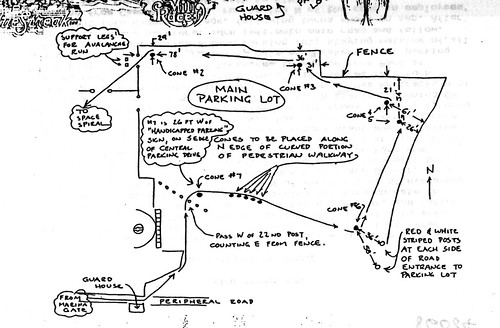Message to Ryan Lamppa from Gene Newman and Gene's reply:
Ryan,
I once did a certification of a closed loop in a convention center. It was
marked off as I guess you could do a parking lot. Hence, considering that I
feel you could do the same for a parking lot. I will put this out there for
others to comment.
Gene
-----Original Message-----
From: Ryan Lamppa [mailto:ryan@runningusa.org]
Sent: Wednesday, January 04, 2006 2:35 PM
To: 'Gene Newman'
Subject: RE: Rock & Roll record attempt
>>As you stated per USATF Regulation 6, this would not be a certified
course.<<
Actually, Gene, I'm saying that per USATF Regulation 6, a parking lot if
properly coned/curbed/laid out could be certified. To me, a parking lot
could be considered a road because: 1) made of asphalt/cement like a road
and 2) used by cars like a road. See the below.
Per USATF Regulation 6 (Certification of Road Courses), which reads, in
part, as follows:
A) Definition of course:
1) Path: A running course shall be defined as the streets, roads, paths,
marked paths on grass or gravel or dirt, and/or paths using established
permanent landmarks or benchmarks which is intended as the runner's path for
any type of race.
P.S. I know road races have started and/or finished in parking lots, but not
aware of a road course entirely/the majority in a parking lot.
Perhaps something to ask the RRTC community.
Ryan
****
Ryan Lamppa, USATF Records Vice Chair
Road Running Information Center
415 E Figueroa St, Ste A
Santa Barbara, CA 93101
(805) 696-6232; fax = (805) 696-6252
http://www.USATF.org
Original Post


